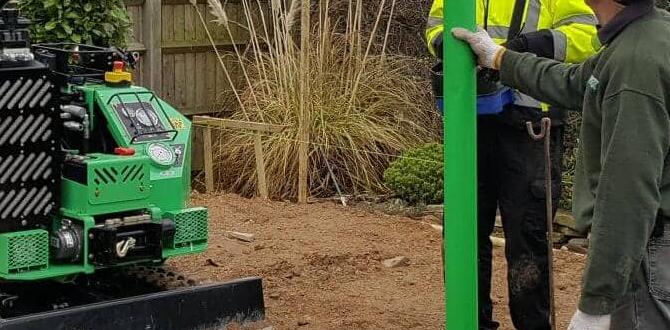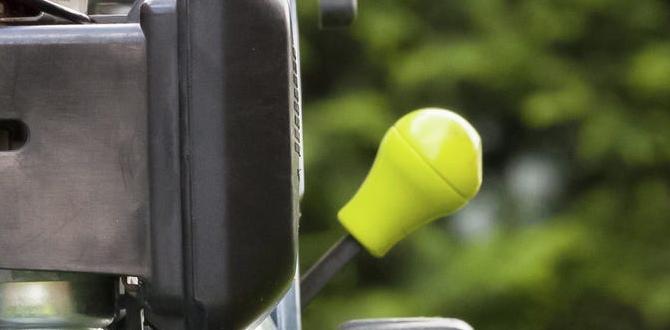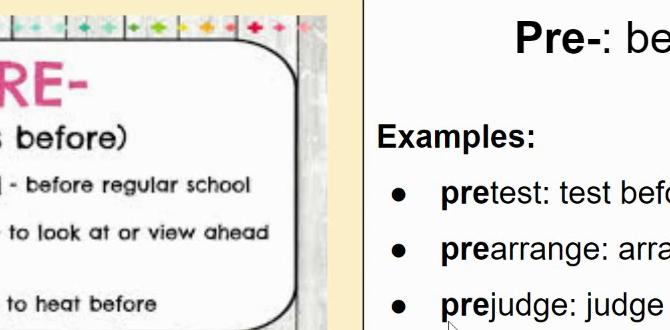Use the right nailer to attach beadboard seamlessly, ensuring a professional finish for your DIY projects. This guide covers everything from choosing your nailer to securing panels with confidence, making beadboard installation easy and stress-free for beginners.
So, you’ve got a beautiful beadboard project in mind – maybe a wainscoting accent wall, a kitchen backsplash, or even a fun custom cabinet update. That’s fantastic! Beadboard adds such a classic, charming touch to any room. But when it comes to attaching those lovely panels, the thought of using a nailer might seem a little daunting, especially if you’re new to the world of power tools. You might be wondering, “Which nailer should I use? How do I make sure the nails go in straight? What if I split the wood?” These are totally normal questions! Don’t worry, I’m here to walk you through it, nail by nail. Together, we’ll make sure your beadboard installation is smooth, secure, and looks like a pro did it. Let’s get that beadboard looking fantastic!
Table of Contents
Why Using a Nailer is a Game-Changer for Beadboard
Tackling beadboard with just a hammer and nails? You can do it, but let’s be honest, it’s a recipe for a sore thumb, uneven fastening, and potentially damaged wood. That’s where a nailer shines, especially for beadboard.
Using a nail gun for beadboard isn’t just about speed; it’s about precision and a cleaner finish. Unlike hammering, a nailer drives nails consistently and powerfully, reducing the risk of splitting the thin wood of beadboard panels or leaving proud nail heads that are a pain to deal with. It means less frustration and more of that high-quality, finished look you’re after. Plus, when you’re dealing with multiple panels, the time savings are colossal! You’ll be amazed at how quickly you can transform a space.
Choosing the Right Nailer for Your Beadboard Project
This is the crucial first step, and thankfully, it’s not as complicated as it might seem. For beadboard, you’re generally looking for a lighter nailer that can handle smaller fasteners without excessive force.
Nail Gauge and Size: What to Look For
Beadboard panels are typically quite thin, often made of MDF or veneer. This means you need a nail that’s strong enough to hold but not so thick that it splits the wood. This is where nail “gauge” comes in. A lower gauge number means a thicker nail. For beadboard, you’ll want to stick to finer nails.
18-Gauge Brad Nailer: This is the star player for beadboard installations. An 18-gauge nail is thin and has a small head, making it ideal for wood that might split easily. It provides a secure hold without being overly visible. You can usually find 18-gauge nails in lengths from 5/8 inch to 2 inches, which is perfect for most beadboard applications. The minimal hole left by an 18-gauge nail is easily filled with wood filler or putty, making for a near-invisible finish.
20-Gauge or 23-Gauge Pin Nailer: For very delicate beadboard or situations where you want the absolute least visible fastener possible, a 20 or 23-gauge pin nailer is an option. Pin nails are even finer and often headless, making them almost impossible to see. However, they offer less holding power than brad nails, so they might be best used in conjunction with adhesive, or for smaller decorative beadboard pieces. For full wall installations, an 18-gauge brad nailer is usually the best all-around choice.
Types of Nailers to Consider
Now, let’s look at the power source for your nailer. Each has its pros and cons, and the best one for you depends on your setup and preferences.
Electric Corded Nailer (Plug-in):
Pros: Generally the most affordable, lightweight, and don’t require fuel cells or bulky air compressors. They provide consistent power as long as they’re plugged in.
Cons: You’re tethered by a power cord, which can be cumbersome when working around a room. You also need to be mindful of the cord’s placement to avoid tripping or running over it.
Cordless Electric Nailer (Battery-Powered):
Pros: Ultimate freedom of movement – no cords to manage! Very convenient for working in various locations. Modern battery-powered nailers offer excellent power and performance.
Cons: Can be more expensive upfront. You need to ensure batteries are charged, and they add a bit of weight to the tool.
Pneumatic (Air) Nailer:
Pros: Often the most powerful and lightest in the hand (as the motor is in the compressor). They are also typically very reliable and can fire nails rapidly. This is a favorite among professionals for all-day use.
Cons: Requires a bulky, noisy air compressor and an air hose. The compressor needs to be relatively close to your work area, and the hose can be a tripping hazard and limit mobility. You’ll also need to ensure the compressor is properly maintained and is powerful enough for the nailer. For a one-off beadboard project, this might be overkill unless you already own the equipment.
Nailer Type Comparison for Beadboard**
| Nailer Type | Pros | Cons | Best For Beadboard |
|---|---|---|---|
| 18-Gauge Electric Corded | Affordable, lightweight, consistent power | Cord can be limiting, potential tripping hazard | Excellent for budget-conscious DIYers and smaller projects |
| 18-Gauge Cordless (Battery) | Great mobility, no cords, powerful | Higher initial cost, battery charging needed, slightly heavier | Ideal for most DIYers seeking convenience and freedom |
| 18-Gauge Pneumatic | Powerful, fast firing, lightweight hand tool | Requires air compressor & hose, noisy, less mobile | Best for professionals or those with existing compressor setups |
Essential Tools and Materials for Beadboard Installation
Beyond your chosen nailer, you’ll need a few other items to make sure your beadboard project goes off without a hitch.
Your Checklist:
Beadboard Panels: Measure your space carefully and purchase slightly more than you need to account for cuts and mistakes.
Nailer: 18-gauge brad nailer is highly recommended.
Nails: 18-gauge brad nails, appropriate length for your beadboard thickness (usually 1 ¼” to 1 ½” for standard beadboard). Check the beadboard manufacturer’s recommendation.
Safety Glasses: Absolutely non-negotiable. Always protect your eyes when using power tools.
Measuring Tape: For precise measurements and layout.
Pencil: For marking cuts and alignment points.
Level: To ensure your panels are installed straight, especially for wainscoting projects.
Miter Saw or Circular Saw: For cutting panels to size. A miter saw is excellent for clean, precise crosscuts and angled cuts.
Wood Glue: Adds significant holding power and prevents rattling.
Wood Filler/Putty: To fill nail holes for a smooth finish.
Caulk: For filling gaps along edges and at corners.
Optional: Stud Finder: If you are attaching beadboard directly to walls, a stud finder helps locate studs for a more secure attachment.
Optional: Sandpaper (medium grit): For smoothing any rough edges after cutting or filling.
Step-by-Step Guide: How to Use Your Nailer for Beadboard
Alright, let’s get your beadboard attached! This process is designed to be straightforward and confidence-building. We’ll assume you’re using an 18-gauge brad nailer for this guide.
Step 1: Prepare Your Workspace and Beadboard
Clear the Area: Make sure you have enough room to move around and work comfortably. Remove any obstructions.
Acclimate Beadboard: If you’ve brought the beadboard home from a store, let it sit in the room where you’ll be installing it for at least 24-48 hours. This allows it to adjust to the room’s temperature and humidity, preventing expansion or contraction issues later.
Measure and Mark: Carefully measure your wall or project area. Plan your cuts, taking into account any doorways, windows, or outlets. Mark your beadboard panels accurately with a pencil.
Make Your Cuts: Use your miter saw or circular saw to make clean cuts. For the best results, cut the panels to fit your specific dimensions. If you’re installing wainscoting, you might need to cut panels to height and also trim the tongue or groove on edges where they meet corners or trim.
Step 2: Prepare Your Nailer
Read Your Nailer Manual: Seriously, take a minute to flip through your nailer’s instruction manual. Each model has specific quirks and safety instructions.
Load the Nails: Open the nailer’s magazine according to the manufacturer’s instructions. Insert the correct gauge and length of brad nails. Ensure they are seated properly and that the magazine closes securely.
Connect Power:
If using an electric corded nailer, plug it into a suitable power outlet. Be mindful of the cord’s path.
If using a cordless nailer, ensure your battery is charged and inserted correctly.
If using a pneumatic nailer, connect the air hose to both the compressor and the nailer. Ensure the compressor is turned on and filled with air, set to the recommended PSI for your nailer (check your manual, typically 70-100 PSI for brad nailers).
Adjust Depth Setting (if available): Many nailers have a depth adjustment knob. Start with a medium setting. You want the nail head to sit flush with the surface of the beadboard, or just slightly below so it can be easily filled.
Step 3: Test Fire and Adjust
This is a critical step to avoid damaging your beadboard or ending up with nails that are too deep or too proud.
Find a Scrap Piece: Grab a piece of scrap beadboard or any similar scrap wood.
Position Nailer: Hold the nailer firmly against the scrap piece, ensuring the safety contact tip is pressed against the wood. This sensor prevents the nailer from firing unless it’s properly positioned.
Fire a Nail: Pull the trigger. The nail should drive into the wood.
Check the Depth: Examine the nail. Is the head flush with the surface? Is it slightly proud (sticking out)? Is it sunk too deep, creating a divot?
Adjust as Needed:
If the nail is too proud, increase the depth setting slightly (or if pneumatic, slightly increase PSI).
If the nail is sunk too deep, decrease the depth setting (or slightly decrease PSI).
If the wood is splitting, you might be too close to an edge, or you may need to reduce the depth setting further. Sometimes, a slightly longer nail can help drive further and hold better, but be careful not to overdrive it.
Repeat: Test fire a few more times on your scrap piece until you are confident that your nailer is set to drive the nails perfectly.
Step 4: Apply Adhesive (Recommended for Best Results)
For beadboard panels, especially those on walls, using wood glue in addition to nails provides a much more secure and durable installation. It helps prevent the panels from rattling and adds significant strength.
Apply a Thin Bead: Run a thin bead of construction adhesive or wood glue along the back of the beadboard panel. Focus on the edges and down the center.
Avoid Over-Application: You don’t need a huge amount. Too much glue can squeeze out excessively, making cleanup difficult.
Work Quickly: Adhesive has a set time, so have your panel ready to place immediately after applying the glue. Many adhesives recommend waiting a few minutes for them to become “tacky” before joining the surfaces, so check your product’s instructions at The Home Depot’s guides on construction adhesives.
Step 5: Position and Nail the Beadboard Panel
Now for the exciting part – attaching the beadboard!
Align the Panel: Carefully position the beadboard panel against your wall or project surface. Ensure it’s straight using your level. If you’re installing multiple panels, make sure the tongue and groove joints are connecting properly.
Secure First Nail: Place your nailer tip on the beadboard, near an edge and preferably where it will be supported by a stud if applicable. Ensure you are not too close to the edge of the beadboard to avoid splitting. Press the safety contact tip firmly against the surface and pull the trigger to drive the first nail.
Nail Along Edges and Joints:
Start placing nails along the top and bottom edges of the panel. Space nails about 6-8 inches apart.
If the panel meets a stud, aim to nail into the stud for maximum holding power.
Pay close attention to the tongue and groove connection. Nail through the flat part of the bead at a slight angle into the stud or substrate. This is often the most critical area for a secure fit. A good rule of thumb is to place nails about 1 inch from the top edge of the bead and 1 inch from the bottom edge of the bead.
For beadboard installed vertically, nail along the top and bottom edges, and also into any supporting structure behind it.
If you have a very long panel, consider adding a few nails along the middle for extra stability.
Hold Firmly: Maintain firm, even pressure on the nailer as you fire each nail. This helps ensure consistent depth and prevents the tool from bouncing.
Check the Fit: As you go, periodically check that the panel is sitting flush against the wall and that the joints are tight. Make minor adjustments before you’ve driven too many nails.
Step 6: Continue with Subsequent Panels
Apply glue to the next panel if using.
Slide the tongue of the new panel into the groove of the previous one, ensuring a tight seam.
Nail the new panel in place, following the same spacing and technique as before.
You may need to use a rubber mallet or a block of wood to gently tap panels together to ensure very tight joints. This is especially important when the beadboard is meant to be a decorative element.
Step 7: Finishing Touches
Once all your beadboard is up, it’s time to make it look perfect.
Fill Nail Holes: Use a good quality wood filler or putty. Choose a color that closely matches your beadboard, or one that will take paint well. Apply it with a putty knife, pressing it into the nail holes. Let it dry completely according to the product instructions.
Sand Smooth: Once the filler is dry, lightly sand the filled areas smooth with medium-grit sandpaper. Feather the edges so they blend seamlessly with the beadboard surface.
Caulk Gaps: Apply a bead of paintable caulk along any seams where the beadboard meets trim, ceilings, or corners. Smooth the caulk line with a damp finger or caulk-smoothing tool for a clean finish.
Clean and Paint: Wipe away any dust from sanding. Then, prime and paint your beadboard as desired!
For more detailed information on home improvement projects and techniques, resources like Popular Mechanics often offer excellent visual guides and tips.
Troubleshooting Common Beadboard Nailing Issues
Even with the best intentions, you might run into a hitch. Here are some common problems and how to fix them.
Nails Splitting the Beadboard:
- Cause: Nail is too thick, fired too close to the edge, or the nailer depth is set too high. MDF beadboard is particularly prone to splitting.
- Solution: Use thinner gauge nails (stick to 18-gauge or finer


